
Alan Alexander Milne was an English writer best known for his books about the teddy bear Winnie-the-Pooh, as well as for children's poetry. Milne was primarily a playwright before the huge success of Winnie-the-Pooh overshadowed all his previous work. Milne served in both World Wars, as a lieutenant in the Royal Warwickshire Regiment in the First World War and as a captain in the Home Guard in the Second World War.
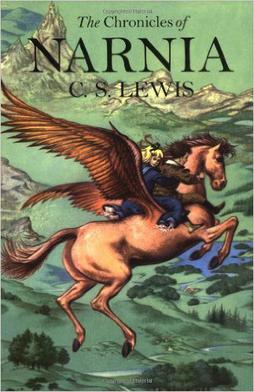
The Chronicles of Narnia is a series of seven portal fantasy novels by British author C. S. Lewis. Illustrated by Pauline Baynes and originally published between 1950 and 1956, The Chronicles of Narnia has been adapted for radio, television, the stage, film, and video games. The series is set in the fictional realm of Narnia, a fantasy world of magic, mythical beasts and talking animals. It narrates the adventures of various children who play central roles in the unfolding history of the Narnian world. Except in The Horse and His Boy, the protagonists are all children from the real world who are magically transported to Narnia, where they are sometimes called upon by the lion Aslan to protect Narnia from evil. The books span the entire history of Narnia, from its creation in The Magician's Nephew to its eventual destruction in The Last Battle.

Lord Voldemort is a character and the main antagonist in J. K. Rowling's series of Harry Potter novels. The character first appeared in Harry Potter and the Philosopher's Stone, which was published in 1997, and returned either in person or in flashbacks in each book and its film adaptation in the series except the third, Harry Potter and the Prisoner of Azkaban, in which he is only mentioned.

Prince John was the fifth son and youngest of the six children of King George V and Queen Mary. At the time of his birth, his father was heir apparent to John's grandfather Edward VII. In 1910, John's father succeeded to the throne upon Edward VII's death, and John became fifth in the line of succession to the British throne.
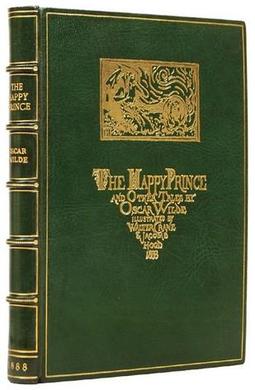
The Happy Prince and Other Tales is a collection of stories for children by Oscar Wilde first published in May 1888. It contains five stories: "The Happy Prince," "The Nightingale and the Rose," "The Selfish Giant," "The Devoted Friend," and "The Remarkable Rocket." In 2003, the second through fourth stories were adapted by Lupus Films and Terraglyph Interactive Studios into the three-part series Wilde Stories for Channel 4.
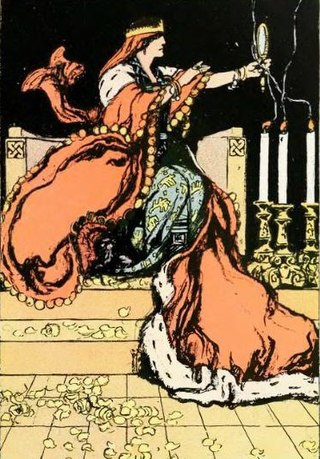
The Evil Queen, also called the Wicked Queen or just the Queen, is a fictional character and the main antagonist of "Snow White", a German fairy tale recorded by the Brothers Grimm; similar stories exist worldwide. Other versions of the Queen appear in subsequent adaptations and continuations of the fairy tale, including novels and films. One particularly notable version is Disney's depiction, sometimes known as Queen Grimhilde. The character has also become an archetype that inspired unrelated works.

Henry Stuart, Duke of Gloucester was the youngest son of Charles I, King of England, Scotland, and Ireland, and his wife, Henrietta Maria of France. He is also known as Henry of Oatlands.

The Danish royal family is the dynastic family of the monarch of Denmark. All members of the Danish royal family except King Frederik X, Queen Mary and Queen Margrethe II hold the title of Prince(ss) of Denmark. Descendants of Margrethe II additionally bear the title Count(ess) of Monpezat. Children of the monarch are accorded the style of His/Her Royal Highness. The King and Queen are styled Majesty.
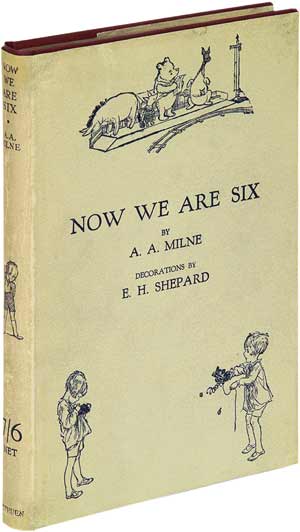
Now We Are Six is a 1927 book of children's poetry by A. A. Milne, with illustrations by E. H. Shepard. It is the second collection of children's poems following Milne's When We Were Very Young, which was first published in 1924. The collection contains thirty-five verses, including eleven poems that feature Winnie-the-Pooh illustrations.

Grand Duke Michael Mikhailovich of Russia was a son of Grand Duke Michael Nicolaievich of Russia and a grandson of Tsar Nicholas I of Russia.

Frederica Louisa of Hesse-Darmstadt was Queen of Prussia and Electress of Brandenburg as the second spouse of King Frederick William II.
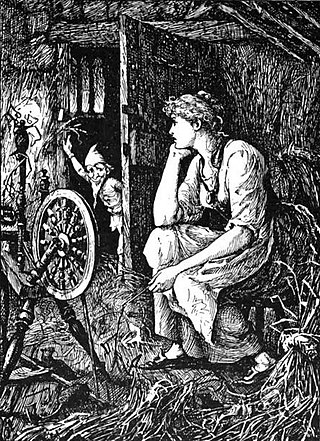
The Langs' Fairy Books are a series of 25 collections of true and fictional stories for children published between 1889 and 1913 by Andrew Lang and his wife, Leonora Blanche Alleyne. The best known books of the series are the 12 collections of fairy tales also known as Andrew Lang's "Coloured" Fairy Books or Andrew Lang's Fairy Books of Many Colors. In all, the volumes feature 798 stories, besides the 153 poems in The Blue Poetry Book.

When We Were Very Young is a best-selling book of poetry by A. A. Milne. It was first published in 1924, and it was illustrated by E. H. Shepard. Several of the verses were set to music by Harold Fraser-Simson. The book begins with an introduction entitled "Just Before We Begin", which, in part, tells readers to imagine for themselves who the narrator is, and that it might be Christopher Robin. The 38th poem in the book, "Teddy Bear", that originally appeared in Punch magazine in February 1924, was the first appearance of the famous character Winnie-the-Pooh, first named "Mr. Edward Bear" by Christopher Robin Milne. In one of the illustrations of "Teddy Bear", Winnie-the-Pooh is shown wearing a shirt which was later coloured red when reproduced on a recording produced by Stephen Slesinger. This has become his standard appearance in the Disney adaptations. On 1 January 2020, When We Were Very Young entered the public domain in the United States, but remains protected in other countries, including the UK.

The Legend of Snow White is an Italian-Japanese anime series produced by Tatsunoko Productions and Mondo TV, based on the 1812 European fairy tale. Directed by Kunitoshi Okajima, the series premiered on NHK on 6 April 1994 and ran for 52-episodes until its conclusion on 29 March 1995.

Breeching was the occasion when a small boy was first dressed in breeches or trousers. From the mid-16th century until the late 19th or early 20th century, young boys in the Western world were unbreeched and wore gowns or dresses until an age that varied between two and eight. Various forms of relatively subtle differences usually enabled others to tell little boys from little girls, in codes that modern art historians are able to understand but may be difficult for the layperson to discern.

Aslan is a major character in C. S. Lewis's The Chronicles of Narnia series. Unlike any other character in the Narnian series, Aslan appears in all seven chronicles. Aslan is depicted as a talking lion and is described as the King of Beasts, the son of the Emperor-Over-the-Sea, and the King above all High Kings in Narnia.

Aurora Wilhelmina Brahe née Koskull was a Swedish lady-in-waiting and politically active salonist.

Prince William Hyacinth of Nassau-Siegen was a Prince of Nassau-Siegen. He also claimed the Principality of Orange.

"Somebody Else's Prince" belongs to a collection of short stories, named The Other Side of the Sun, written by Evelyn Sharp (1869–1955) in 1900. Other stories in this collection include: The Weird Witch of the Willowherb, The Magician's Tea-Party, The Hundredth Princess, The Tears of Princess Prunella, The Palace on the Floor, The Lady Daffodilia, and The Kite That Went to the Moon.

The coronation of George V and his wife, Mary, as king and queen of the United Kingdom and the British Dominions took place at Westminster Abbey, London, on Thursday 22 June 1911. This was the second of four such events held during the 20th century and the last to be attended by royal representatives of the great continental European empires.



















